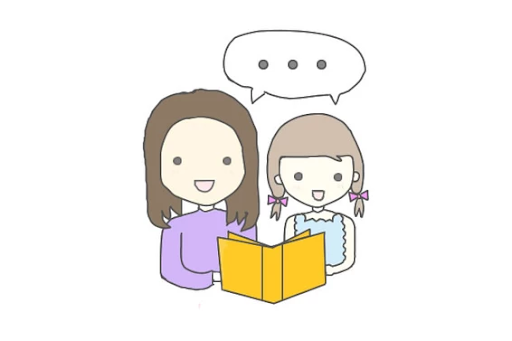
Due to the fact that children’s literacy development is crucial to their academic achievements, many parents send their children to language learning centres, aiming to build and enhance their reading and writing skills. In fact, parental involvement is also very effective in enhancing children’s literacy skills. This article will introduce two home-based and cost-effective reading methods that parents could use to facilitate their children’s language and literacy development.
The first method is paired reading, a handy method for teaching children to read. Generally speaking, there are two phases, reading together and reading alone. Reading together requires the child and parent to read a storybook or an article aloud to each other synchronously. Then, when the child feels comfortable to read alone, the parent stops reading and becomes a listener. In both phases, when the child makes a mistake, the parent corrects the child by supplying the correct word.
A study published in School Psychology International by Professor Topping examined the usefulness of paired reading on more than a thousand western children and found that children who were in paired reading programme had large gains in English word reading accuracy and comprehension (Topping, 1986). Recently, Dr. Shui-fong Lam, an Associate Professor at The University of Hong Kong, and colleagues conducted a paired reading study and found that paired reading also enhances Chinese word recognition and reading fluency in Hong Kong Chinese children, as well as reinforcing their motivation to read. Besides, finding of the study also suggested that the parent-child relationship can be promoted under paired reading.
The second method is dialogic reading. Dialogic reading is a further developed technique of paired reading. In dialogic reading, the parent acts as an active listener and helps the child to become a storyteller by using the PEER sequence. In the PEER sequence, the parent:
Prompts the child to say something about the story, evaluates the child’s response, expands the child’s responses by rephrasing and adding information, and repeats the prompt to ensure the child has learned from the expansion. (Whitehurst, 1992, para. 9)
Here is an example of using the PEER sequence while the parent and the child are reading a book: The parent asks, "What is Polly holding? (the prompt)”. The child answers, "a pen", and the parent follows with "Good! (the evaluation); Polly is holding a black colour ink pen (the expansion); can you say a black colour ink pen? (the repetition)".
To examine the effectiveness of dialogic reading, Professor McBride and colleagues conducted two dialogic reading studies on Hong Kong Chinese children and found that children in dialogic programme yielded gains in their Chinese literacy skills and English reading skills, as well as promoting their phonological awareness in both Chinese and English. More information about dialogic reading can be found in the following links:http://www.psy.cuhk.edu.hk/~qefproject/ & http://cityuass.wix.com/index
From these studies, we understand that parental involvement plays an important role in children’s literacy development. Therefore, we encourage parents to read with their children, using either the paired or dialogic reading method, for 5-15 minutes, few times a week.
References:
Chow, B. W.-Y., & McBride-Chang, C. (2003). Promoting language and literacy development through parent–child reading in Hong Kong preschoolers. Early Education and Development, 14, 233–248. doi: 10.1207/s15566935eed1402_6.
Chow, B. W.-Y., McBride-Chang, C., & Cheung, H. (2010). Parent–child reading in English as a second language: Effects on language and literacy development of Chinese kindergarteners. Journal of Research in Reading, 33,284-301. doi: 10.1111/j.1467-9817.2009.01414.x
Lam, S. F., Chow-Yeung, K., Wong, B. P., Lau, K. K., & Tse, S. I. (2013). Involving parents in paired reading with preschoolers: Results from a randomized controlled trial.Contemporary Educational Psychology, 38, 126-135. doi: 10.1016/j.cedpsych.2012.12.003
Topping, K. J. (1986). Effective service delivery: Training parents as reading tutors. School Psychology International, 7,231–236. doi: 10.1177/0143034386074007
Whitehurst, G J. (1992). Dialogic reading: An effective way to read to preschoolers. Retrieved from http:// www.readingrockets.org/article/400
This article was written by our guest blogger Miss. YIM, Yin Ting Sharon. Miss. Yim is currently a research assistant in the Life Span Development Laboratory of The Chinese University of Hong Kong.